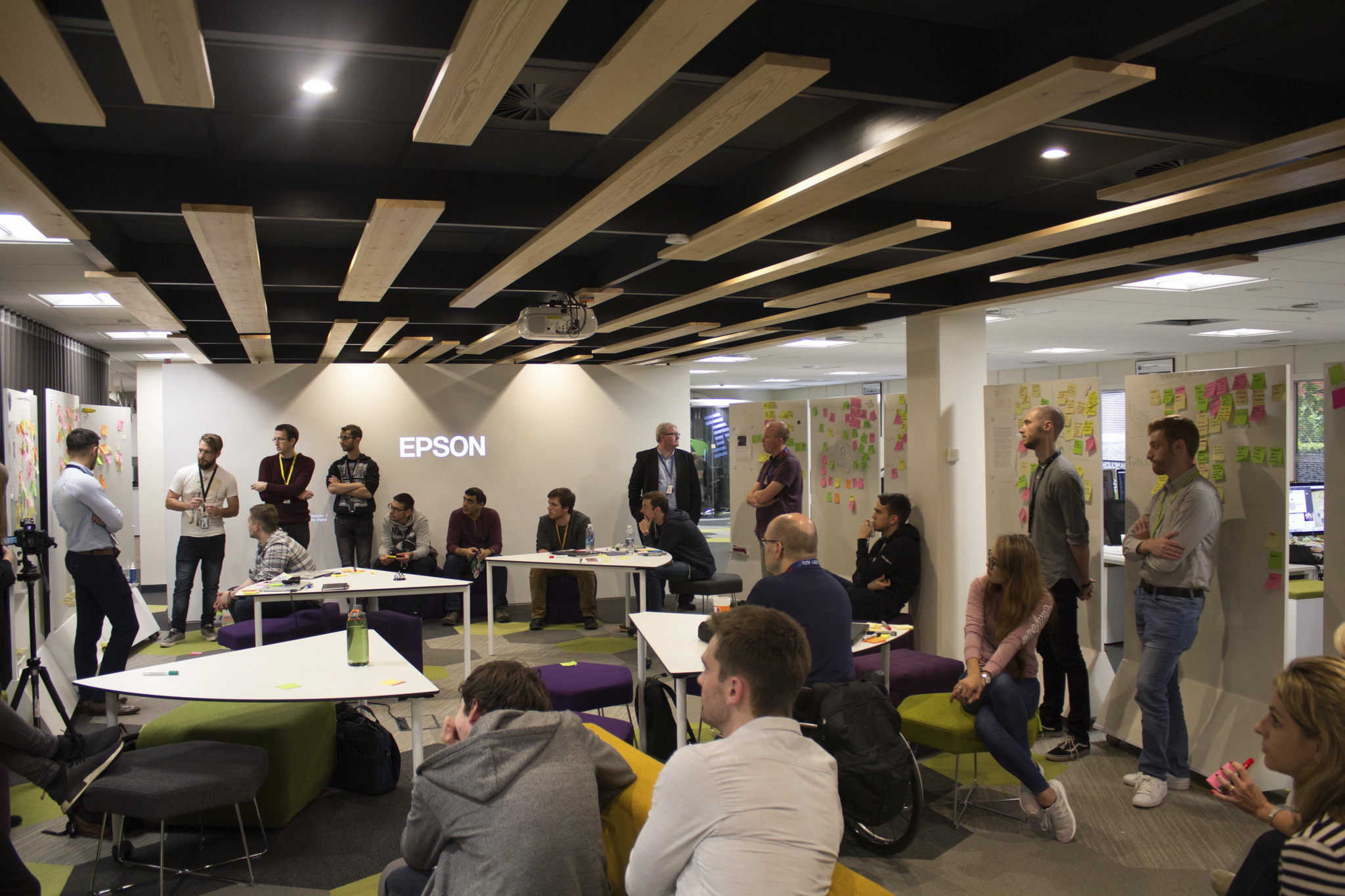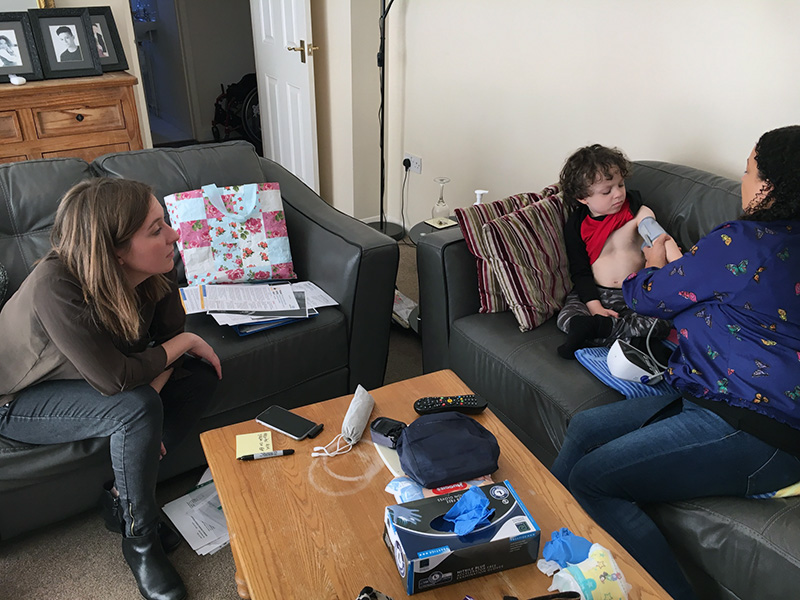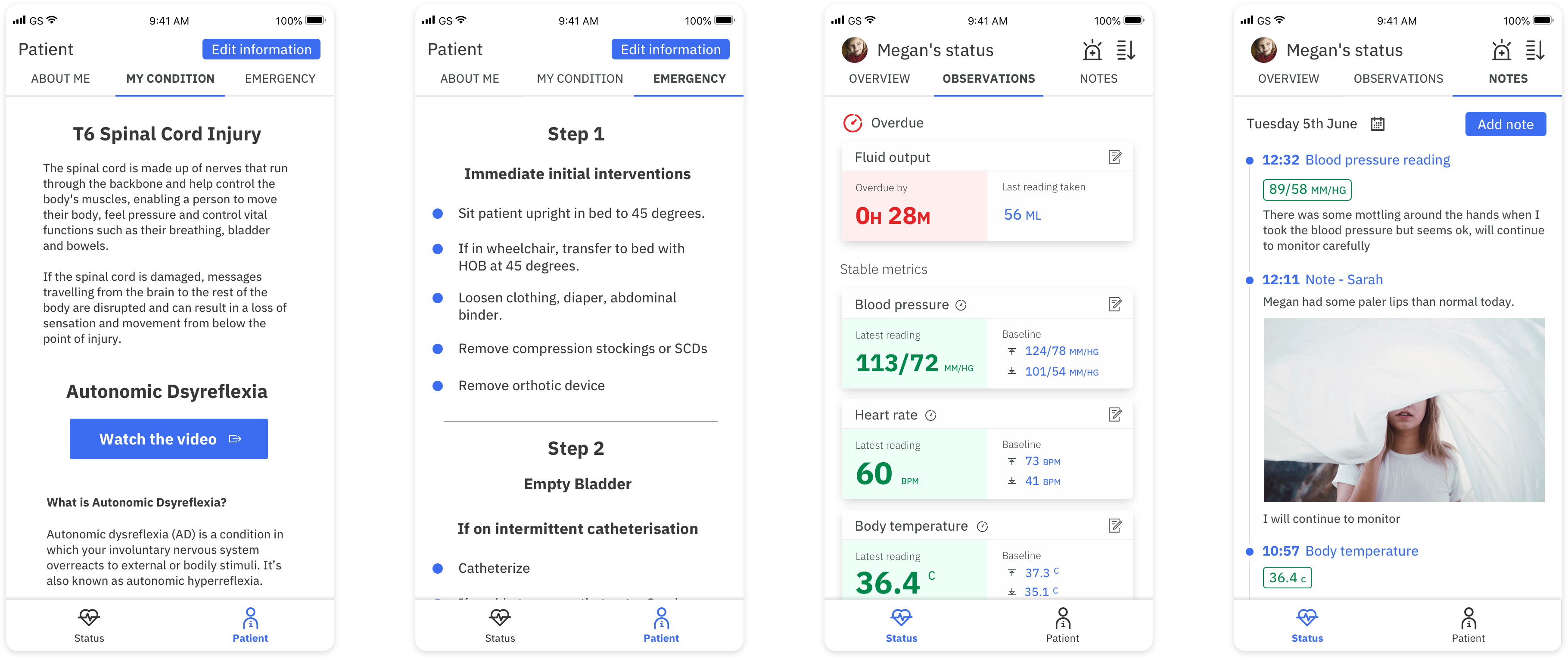To help new carers recognise the signs of a developing AD episode, and equip them with the knowledge to react safely and accordingly.
Personas

The experienced parent
The new carer

The hungry researcher
The experienced parent
Emma works as a part-time physiotherapist and has three children who are 15, 13 and two. Her youngest, Harvey, has had intermittent episodes of AD since developing a cyst on his spine which left him paralyzed from the waist down.
Challenges
- Emma is constantly vigilant for signs of AD and has little time to relax.
- Training new carers takes a long time due to the complexity of the condition. Several have worked with the family over the past year but none have stayed longer than 3 months.
- Emma spends much of her time coaching carers and designing paper resources to ensure the safe handover of care.
The new carer
Tobi has worked as an agency healthcare assistant for 15 years. He has looked after patients with a variety of challenges, including those with brain injury and sufferers of stroke. Day to day tasks for Tobi include helping patients get washed and dressed, taking regular observations of blood pressure and heart rate, and ensuring patients have medical and practical assistance when needed.
Challenges
- Tobi is used to recording patient observations like blood pressure and blood sugar, but has no formal medical training.
- He’s never worked with someone who has AD and needs to quickly up-skill in order to offer preventative care.
The hungry researcher
Dr Mead is the Rehabilitation Medical Director at a specialist hospital for spinal injuries. She works most closely with physiotherapists, nurses and academic researchers.
Challenges
- The hardest part of her job is educating patients and families on the signs and symptoms of AD.
- Very little is known about the condition, in particular the varying signs and symptoms of AD across patient groups and contextual and environmental triggers.





